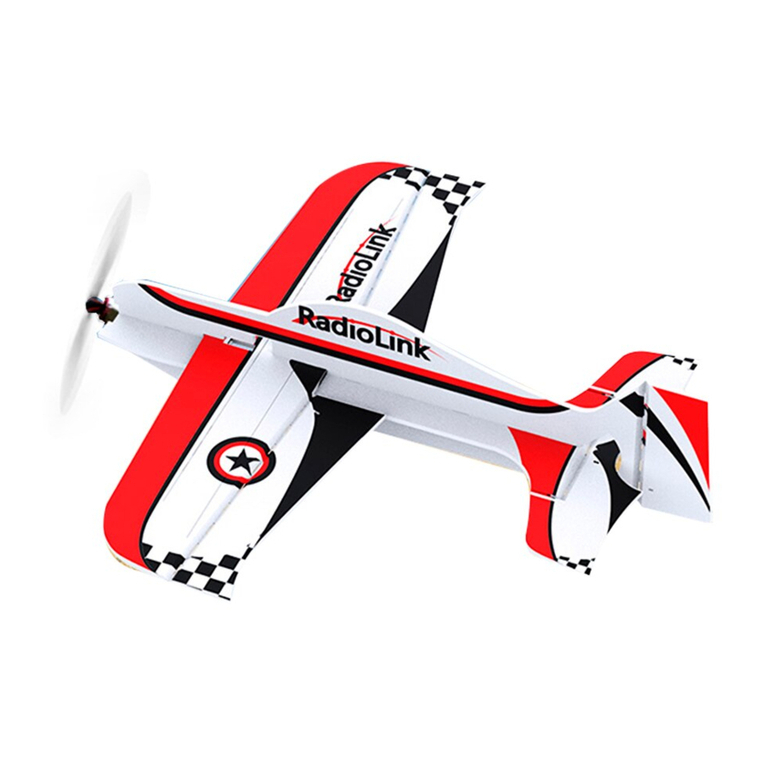
RadioLink Electronic Ltd
www.radiolink.com
3
1.2.3 Rudder servo/Vertical Tail
Similar to elevator servo, when rudder servo moves left, the vertical tail gets pushed to right by
airflow and the head of A560 will turn left. When rudder servo moves right, the vertical tail gets
pushed to left and the head of A560 will turn right.
Note The direction mentioned above is relative to aircraft instead of the ground. That is, if the
aircraft is reversed (body upside down), its above is the ground instead of the sky/ceiling.
When there’s no flight controller assisting or at MANUAL MODE, if maximize the elevator
servo, the aircraft will roll over like roller coaster instead of moving upward. When under the
assistance of the flight controller with VERTICAL MODE or STABILIZE MODE, the max pitch
angle is limited. The aircraft will keep heading upward instead of rolling over if the elevator
servo is maximized.
Besides, the function of all servos are related to the motor/throttle (prop rotation speed).
Because if the aircraft moves faster, the airflow applies more force on the servos.
1.3 Transmitter and Receiver
A560 RTF(Ready To Fly) is packed with RadioLink 8-channel transmitter T8FB and mini
receiver R8FM, with the stable control distance up to 2000m. (Maximum range tested in
unobstructed areas free of interference and may vary depending on local regulations)
If it is the BNP version purchased, transmitter and receiver needs to be installed. A560 is
compatible to all transmitters that SBUS/PPM signal supported.
1.4 Power System
The power system of A560 includes motor, ESC, propellers and battery.
1.4.1 Motors and Propellers
Motor installed on A560 is SZ 2206F 1500KV brushless motor. (motor with higher KV value,
means higher rotation speed and smaller torsion force, suits smaller propeller)
A560 adopts GEMFAN 8030 props, which is installed by factory default. If new prop needs to
be changed, fix the prop and motor with a rubber band.
Note Propeller need to be identified correctly. If forward and reverse mistaken, the aircraft
couldn’t take off even maximize the throttle. The rotation direction of motor and prop should be
same. That is, if the motor rotates clockwise, so is the prop.
1.4.2 ESC
The function of ESC is to change the direct current to alternating one to power supply motor
and change its rotation speed basing on the throttle command. Another function of ESC is to
lower the model voltage to 5V for receiver as the battery applied for A560 is 7.4V 2S LiPo.
Therefore, there are three wires of ESC respectively for battery, motor and receiver. ESC
applied in A560 is FLYCOLOR 15A brushless ESC.
1.4.3 Battery
A560 supports 2S-3S LiPo battery. With 660mAh LiPo battery fully charged, pilots can enjoy
vertical flight for10min while level flight 20min.































